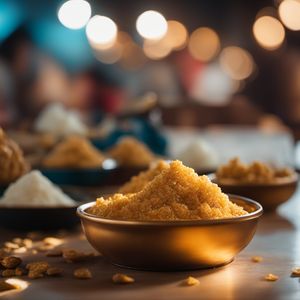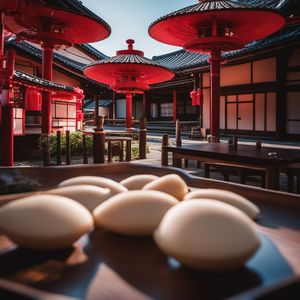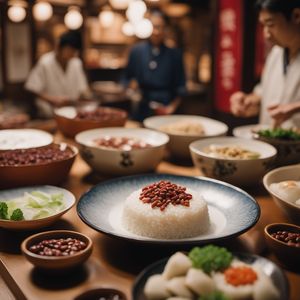
Dish
Halva ye havij
Halva ye havij is made by grating carrots and then cooking them with sugar and rose water until the mixture becomes thick and sticky. The dessert is then shaped into small squares and served with pistachios and almonds. Halva ye havij is a popular dessert in Iran and is often served alongside other traditional Iranian sweets such as baklava and sholeh zard.
Origins and history
Halva ye havij is believed to have originated in Iran during the Safavid dynasty (1501-1736). It was a favorite dessert of the royal family and was often served at banquets and special occasions. Today, halva ye havij is a popular dessert throughout Iran and is often served at weddings and festivals.
Dietary considerations
Halva ye havij is high in sugar and calories due to the use of sugar and nuts. It is not suitable for those with nut allergies or who are on a low-sugar diet.
Variations
There are many variations of halva ye havij, including halva ye zardak (made with pumpkin) and halva ye badam (made with almonds). Some recipes also call for the addition of saffron or cardamom for flavor.
Presentation and garnishing
Halva ye havij is traditionally served on a platter and garnished with pistachios and almonds. It can also be shaped into decorative shapes such as flowers or animals for a festive touch.
Tips & Tricks
To make halva ye havij, it is important to use fresh, high-quality carrots and nuts. The mixture should be cooked slowly over low heat to prevent it from burning or sticking to the pan. If the mixture becomes too thick, a small amount of water or milk can be added to thin it out.
Side-dishes
Halva ye havij is often served with tea or coffee. It can also be served with ice cream or whipped cream for a decadent dessert.
Drink pairings
Halva ye havij is traditionally served with tea or coffee. It can also be paired with a glass of milk or a sweet dessert wine such as Muscat.
Delicious Halva ye havij recipes
More dishes from this category... Browse all »

Aamras
Indian cuisine

Aasmi
Indian cuisine

Agra petha
Indian cuisine

Aiyùbīng
Taiwanese cuisine

Ajdnek
Slovenian cuisine

Akafuku
Japanese cuisine

Akanés
Greek cuisine

Akumaki
Japanese cuisine


